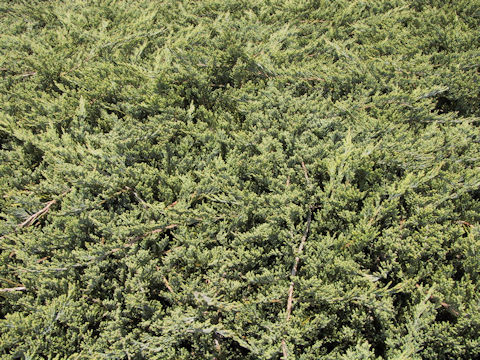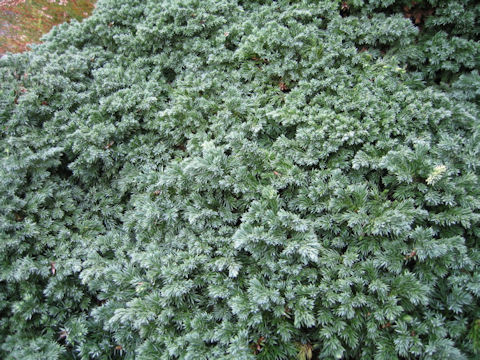 |


















|

|
u¢Ô«iÉjvÌÏíÅAíªÌãBk©ç©N¼ìɪzµÄ¢Ü·BCÝÌ»nɶ¦A}ªnÊðÁÄLªèÜ·BtÍjóܽÍØÐóÅRÖ¶µÜ·BS²ëÔðJ«ANÌHÉ
ʪFÉnµÜ·BëÉàæAͳêĢܷB
|

|
qmLÈlY~TV®ÌíÎáØÅAw¼Í Juniperus chinensis var. procunbensBp¼Í Creeping Chinese juniperB
|

|
The Creeping Chinese juniper (Juniperus chinensis var. procunbens) belongs to Cupressaceae (the Cypress family). It is a small evergreen tree that is a variety of "Chinese juniper" and is distributed from the northern part of Kyushu on Japan to the southern part of the Korean Peninsula. It grows in sandy soil along the coast and spreads out with its branches creeping along the ground. The leaves are needle-like or scale-like, and grow in three whorled. The flowers bloom in April, and the cones ripen blackish purple in the following fall. It is often planted in gardens.
|

|
[ãEP`Q] ê§Ãsu
¶A¨övÉÄA2003N0501úBeB
[R`T] åãsß©æuçâ±ÌÔÙvÉÄA2003N1213úBeB
[U`VEº] ïé§ÂÎsuÂÎÀ±A¨vÉÄA2024N0511úBeB
|










